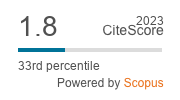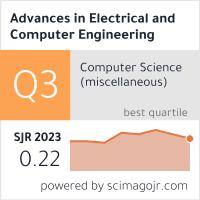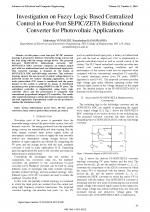| 1/2016 - 8 |
Investigation on Fuzzy Logic Based Centralized Control in Four-Port SEPIC/ZETA Bidirectional Converter for Photovoltaic ApplicationsVENMATHI, M. |
| Extra paper information in |
| Click to see author's profile in |
| Download PDF |
Author keywords
bidirectional power flow, DC-DC power converters, fuzzy control, photovoltaic systems, pi control
References keywords
power(24), electronics(18), systems(9), converter(9), port(8), converters(8), chen(7), input(6), renewable(5), photovoltaic(5)
Blue keywords are present in both the references section and the paper title.
About this article
Date of Publication: 2016-02-28
Volume 16, Issue 1, Year 2016, On page(s): 53 - 60
ISSN: 1582-7445, e-ISSN: 1844-7600
Digital Object Identifier: 10.4316/AECE.2016.01008
Web of Science Accession Number: 000376995400008
SCOPUS ID: 84960084357
Abstract
In this paper, a new four-port DC-DC converter topology is proposed to interface renewable energy sources and the load along with the energy storage device. The proposed four-port SEPIC/ZETA bidirectional converter (FP-SEPIC/ZETA BDC) converter comprises an isolated output port with two unidirectional and one bidirectional input ports. This converter topology is obtained by the fusion of SEPIC/ZETA BDC and full-bridge converter. This converter topology ensures the non-reversal of output voltage hence it is preferred mostly for battery charging applications. In this work, photovoltaic (PV) source is considered and the power balance in the system is achieved by means of distributed maximum power point tracking (DMPPT) in the PV ports. The centralized controller is implemented using fuzzy logic controller (FLC) and the performance is compared with conventional proportional integral (PI) controller. The results offer useful information to obtain the desired output under line and load regulations. Experimental results are also provided to validate the simulation results. |
| References | | | Cited By |
Web of Science® Times Cited: 4 [View]
View record in Web of Science® [View]
View Related Records® [View]
Updated today
SCOPUS® Times Cited: 6
View record in SCOPUS® [Free preview]
View citations in SCOPUS® [Free preview]
[1] Energy storage system: Current studies on batteries and power condition system, Zhang, Chao, Wei, Yi-Li, Cao, Peng-Fei, Lin, Meng-Chang, Renewable and Sustainable Energy Reviews, ISSN 1364-0321, Issue , 2018.
Digital Object Identifier: 10.1016/j.rser.2017.10.030 [CrossRef]
[2] Current and future prospective for battery controllers of solar PV integrated battery energy storage systems, Hasan, Mustafa, Serra Altinoluk, H., Frontiers in Energy Research, ISSN 2296-598X, Issue , 2023.
Digital Object Identifier: 10.3389/fenrg.2023.1139255 [CrossRef]
[3] Analysis and Control of a New Dual-input Impedance-based DC–DC Converter for Hybrid PV-FC Systems, BAYAT, P., BAGHRAMIAN, A., Advances in Electrical and Computer Engineering, ISSN 1582-7445, Issue 4, Volume 19, 2019.
Digital Object Identifier: 10.4316/AECE.2019.04006 [CrossRef] [Full text]
[4] Grey Wolf Optimization and Fed Fast Terminal Sliding Mode Controllers Based on Interleaved Boost Converters for Symmetric PV Systems under Asymmetric Partial Shading, Sekar, Kamalsakthi, Arasan, Elankurisil, Chandrasekaran, Kannan, Symmetry, ISSN 2073-8994, Issue 7, Volume 15, 2023.
Digital Object Identifier: 10.3390/sym15071339 [CrossRef]
Disclaimer: All information displayed above was retrieved by using remote connections to respective databases. For the best user experience, we update all data by using background processes, and use caches in order to reduce the load on the servers we retrieve the information from. As we have no control on the availability of the database servers and sometimes the Internet connectivity may be affected, we do not guarantee the information is correct or complete. For the most accurate data, please always consult the database sites directly. Some external links require authentication or an institutional subscription.
Web of Science® is a registered trademark of Clarivate Analytics, Scopus® is a registered trademark of Elsevier B.V., other product names, company names, brand names, trademarks and logos are the property of their respective owners.
Faculty of Electrical Engineering and Computer Science
Stefan cel Mare University of Suceava, Romania
All rights reserved: Advances in Electrical and Computer Engineering is a registered trademark of the Stefan cel Mare University of Suceava. No part of this publication may be reproduced, stored in a retrieval system, photocopied, recorded or archived, without the written permission from the Editor. When authors submit their papers for publication, they agree that the copyright for their article be transferred to the Faculty of Electrical Engineering and Computer Science, Stefan cel Mare University of Suceava, Romania, if and only if the articles are accepted for publication. The copyright covers the exclusive rights to reproduce and distribute the article, including reprints and translations.
Permission for other use: The copyright owner's consent does not extend to copying for general distribution, for promotion, for creating new works, or for resale. Specific written permission must be obtained from the Editor for such copying. Direct linking to files hosted on this website is strictly prohibited.
Disclaimer: Whilst every effort is made by the publishers and editorial board to see that no inaccurate or misleading data, opinions or statements appear in this journal, they wish to make it clear that all information and opinions formulated in the articles, as well as linguistic accuracy, are the sole responsibility of the author.





